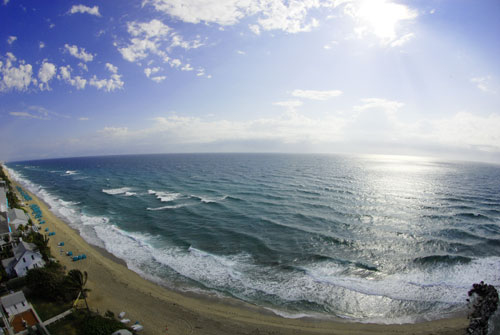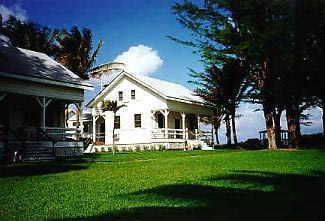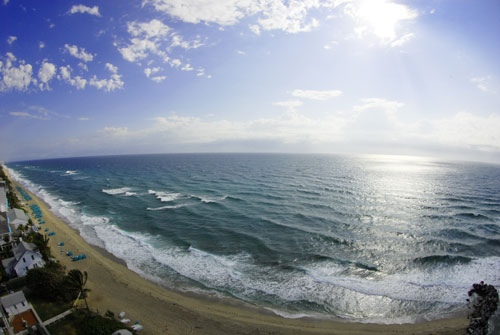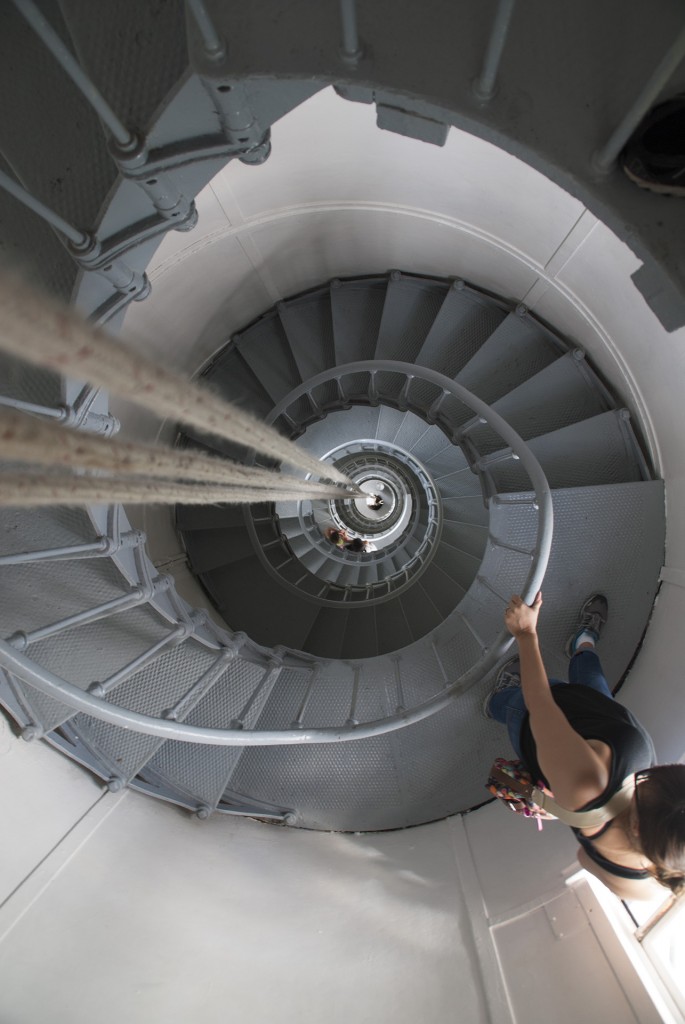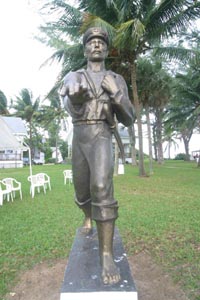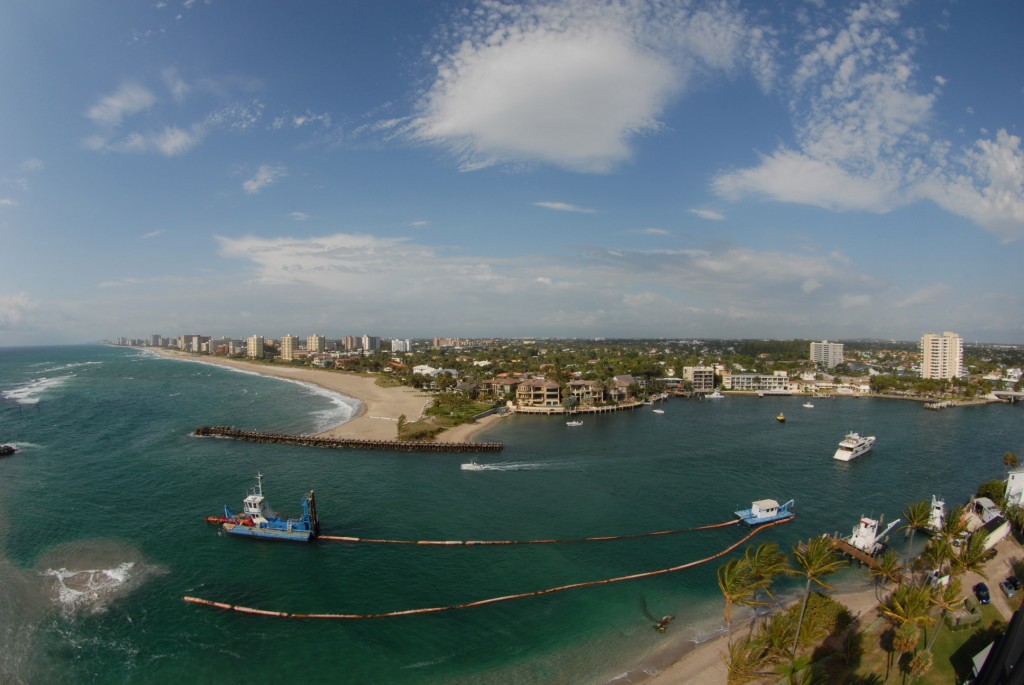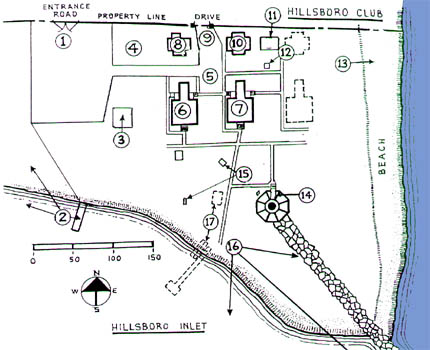Travel in style along the intercoastal towards the historic Hillsboro Inlet Lighthouse. A guide will meet you at the lighthouse docks, and tell you about it's history. Then, you are free to climb the 175 stairs to the top, and enjoy the spectacular view. The dock only available for use with special permission. -- To the northwest side of the dock is the work area of the Hillsboro Inlet District's (HID)“sand transfer operation”, moving the migration of sand south of this inlet and preventing the sand from filling up the inlet's 20-foot deep boat channel. (More of this later at Station #16.) --- Tied up along side of this area is the work boat renamed in 2004 to “DAVE BUTLER”in memory of HLPS's past president who died in September 2003. (One of the 4 remaining wooden structures built in 1906.) This second assistant keeper's dwelling is one of the three 1907 original buildings which served as dwellings for the families of the principal keeper and his two assistants. This building became the assistant keeper's building in the 1920's when electricity came to this Station and the third keeper was not needed. Later, it became one of three dwellings for “R & R”time of Coast Guard officers & their families. The middle of the original three 1 ½ story dwellings housed the principal keeper and his family. It is now the most favored dwelling for the Coast Guard VIPs and their families. Originally, the kitchen on the north wing was separated from the main residence with an open breezeway between them. In the old days the concept was the hot kitchen would not heat the living area and if the kitchen was to catch on fire, they could isolate it. The kitchen fireplace was closed when a kerosene stove was provided. Later, the chimney was removed and the breezeway was closed in to enlarged the living area and provide a dining area. Note the cistern under what used to be the breezeway. In the old days it collected the rain water from the roof and a hand-pitch pump provided the water at the kitchen sink from the cistern. - Today the 2nd floor has 2 bedrooms & a full bath. Downstairs is a bedroom, bath, and a living room in front of the dining area. Behind each of the 3 dwellings there was a similar structure each with a privy in back. (See #10) During World War I, this (#8) barn was converted into barracks. USCG Beach Patrol always kept four signalmen stationed there. They communicated with ships off shore by semaphore (flag waving or beamed light). - Later this was converted to a guest cottage and today is the third dwelling for Coast Guard VIP's for their “R & R”time. When the lighthouse was electrified in 1920, there was a major change. The station did not need a third keeper nor his dwelling. The Hillsboro Club (adjacent to the north) purchased the east set of buildings and moved them onto their property. This concrete block building was built to house the emergency generator and the radio equipment for the new radio beacon tower which was erected just east of this building. Years later the radio beacon signal was discontinued and the tower removed. This building was used as an office for the station's keeper & now is our mini-museum. Please look at the pictures, sketches, maps, etc. on the interior walls & sign our guest book. Get your “U.S. Lighthouse Passport Books”stamped here. The bronze bell is dated 1923, and very little information is known about it. The adjacent bronze plaque honors all the head keepers who served at this station, listing their names and giving dates of their service. During World War II the horse-mounted Coast Guard did beach patrol, seeking any enemy activities or rescue of any survivors from sunken ships. This was the south end of the North Broward Beach Patrol. -- One day the Coast Guard lookout at the lighthouse observed a freighter dumping large objects into the sea, so he reported it. Coast Guard and a Navy destroyer intercepted this freighter and discovered that it was the German raider M/S Arauca. The ship was seized as a war prize, taken to Port Everglades, and the crew arrested. The structure is an octagonal, pyramidal, iron skeleton tower with central stair cylinder, designed by the Lighthouse Engineers in Charleston, SC prior to 1905. It was fabricated by Russell Wheel & Foundry of Detroit, assembled there, disassembled, and shipped by steamer to South Florida. The builder of the structures here in 1906-07 was J. H. Gardiner of New Orleans. The tower height, ground to top of lantern, is 142 feet. The total number of steps to the lantern room is 175. The light was first lit in March 1907. It has the original second order bivalve (clamshell) Fresnel lens by Barbier, Benard, & Turenne, Paris (1904). Note the new entry walkway with railing to new steel steps outside the struts and legs. In 2004 the ground was lowered to the original level, 18 inches below the struts. Within the tower area is now covered with gravel. A curved slate-veneered wall constructed on the ocean side of the tower is to prevent the beach sand from drifting into the tower's legs and decaying more of the struts again. A memorial plaque, “Beaver”, is for a Coast Guard mascot dog for 15 years of faithful service at this lighthouse station from 1958 to 1973. The Barefoot Mailman walked the beaches of South Florida between Palm Beach and the Miami River settlement, 40 miles by foot and 28 miles by several small boats. A round trip took Monday through Saturday. He would stay over night at the “Houses of Refuge”. Sometimes he acted as guide for a small fee. One part of the journey took him to what is the Hillsboro Inlet, where he crossed in a small row boat. This mail service ran from 1885 to 1892. Charles Pierce was a Barefoot Mailman and also posed for the 6 murals that are on display on the walls of the West Palm Beach Post Office. The “Barefoot Mailman”stone statue (the original) now stands here where boaters may see this “honorable gentlemen”as they go in and out of Hillsboro Inlet. The Barefoot Mailman has its unique history. Several “story tellers”are here during Hillsboro Lighthouse tours to give their version handed down through their families. Frank & Steve Varga are the Barefoot Mailman's sculptors. Often in the early days after a severe storm and at low tide, the beach extended to the south shore banks, closing the inlet. In 1925 the government built on the south side a wooden jetty between the inlet and Wahoo Bay. In 1930, after the 1926 hurricane exposing the foundation of the tower, a Georgia granite stone jetty was built from the tower out southeast 400 feet. Still, at times the inlet was not navigable until the inlet was dredged for a channel to the sea in 1947. It was reworked in 1964 and 1966 with a weir between the two parts of the north jetty, making a sand trap. Hillsboro Inlet and dredging Today's dredge is a used “Ellicott Dragon”, designed as an inland waters dredge. It has a 14-inch (pipeline diameter) pump and is capable of moving a very large amount of sand. The delivery line which conveys sand under the Inlet channel and to the beach south of the South Jetty was changed to a 12 inch line, giving higher water flow velocity and hence less chance of sediment falling out of the flow to plug the pipe. Now in a few hours of pumping, the crew can move more sand than they could all day with the original dredge. Today's dredge operator lowers a long tube, the “ladder”. Running through the ladder is a pipe and on the bottom a rotating “cutter head”which loosens the sand so that the dredge pump, mounted in the hull, can suck it up and blow it through the pipe to the south beach. 
Lighthouse Tour Points of Interest
U.S. Coast Guard Dock #2 on Map
Assistant Keeper's Dwelling #6 on Map
Principal Keeper's Dwelling #7 on Map
Assistant Keeper's Barn & Storage Building #8 on Map
Generator & Radio Building #11 on Map
U.S.C.G Bell #12 on Map
Atlantic Beach Access #13 on Map
When the light was converted from oil to electricity, only two keepers were needed so the east dwelling and barn was sold and moved to the Hillsboro Club property. It is NE of the Radio/Office building on the other side of the chain-link fence. The buildings were turned into suites for the Club's guests.Lighthouse Tower #14 on Map
Barefoot Mailman Statue #15 on Map
The most famous of these Mailmen was Ed Hamilton who disappeared at the Inlet with only his clothes and mailbag left behind, not a trace of him to be found!Inlet Beach, Dredge and Sand Trap #16 on Map
In periods of little horizontal drift of beach sand (primarily in summer and when winter waves from the northeast are small) a large hole is dredged inside the north jetty (built in 1966), out of the navigation channel. This is termed a “sand trap”. It serves to catch sand that would otherwise flow into the channel. If the sand trap is dredged out to 12 or 15 feet deep, most of the sand washed over the weir by a northeast storm will be trapped there and will not go into Hillsboro Inlet channel! Only when the sand trap is full, above sea level, will major amounts of sand enter the channel. In 2003 the channel was deepened to 18 to 20 feet.
Hillsboro Lighthouse Tours
U.S. Coast Guard DockAssistant Keeper's DwellingPrincipal Keeper's DwellingAssistant Keeper's Barn & Storage BuildingGenerator & Radio BuildingU.S.C.G Bell, Keepers Plaque & Flag StaffAtlantic Beach AccessLighthouse TowerBarefoot Mailman StatueInlet Beach, Dredge System & Sand Trap

